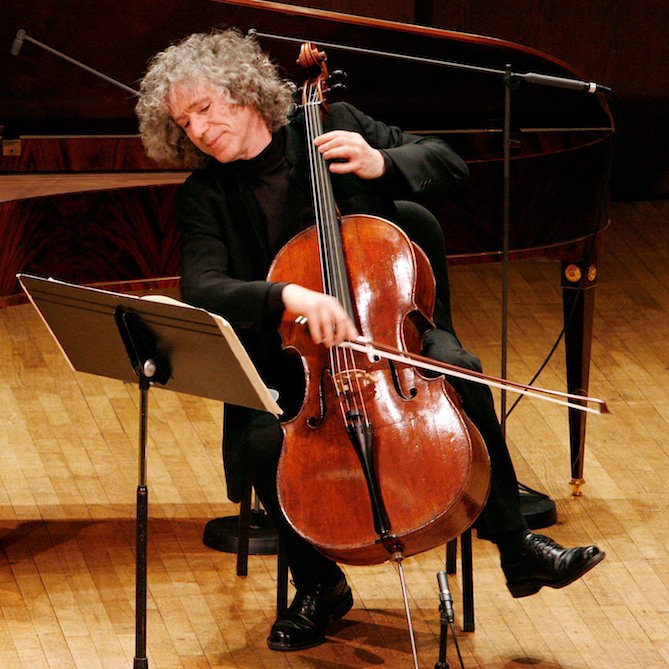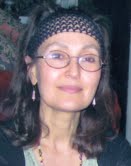
THINKING IN A NEW WAY—Overcoming Habits (Part 3 of 6): My Cello and Me, a Dynamic Partnership
Selma Gokcen
Trying is only emphasizing the thing we already know. —F.M. Alexander
Just as you have the impulse to do something, stop. —Early Zen scripture (anonymous)
Once a reasonable base of understanding is established and a student is able to stop, wait and stay back (this means leaving their back back rather than rushing forward) in the face of simple activities like sitting in and standing up from a chair, going up on the toes, all basic procedures long established in the Alexander Technique, the next challenge is to take up the cello.
For each player, their instrument has associations, sometimes happy, sometimes fraught with tension and negative experiences. Just seeing their instrument makes some of my Alexander students anxious! And they are surprised that they don’t have to pick up the flute or the violin to feel the tension in their shoulders and back. One glance is enough. F.M. Alexander made an important discovery for his time that just a thought of doing something was enough to set a habit pattern in motion. This observation became the basis for his technique of stopping and non-doing.
So we begin in my cello studio by learning to receive the cello without any interest in playing it or even making a sound, sitting with it quietly and sensing how it rests against the body, all the while maintaining an inner still point and sending our directions for a free neck and lengthening and widening back. The challenge of a ‘one-sided’ instrument (one that rests along the left side of the body and is played from the right) is to maintain one’s balance without twisting towards the instrument. The Alexander Technique is helpful, addressing the rotation of the spine which allows one to turn towards or away from the cello, but not to twist (the latter always involves tightening of the muscles along the torso and contraction in the spine).
Of great importance is the contact with the two pelvic rocker bones with the lovely name of “ischial tuberosities” (our sitting bones) against the chair. The pelvic cradle and hips cannot organize well to support us unless the head-neck-back relationship is properly activated. As above, so below. The weight of the head needs to be balanced over our stable base, and received through the sitting bones.
A very helpful exercise in this regard for cellists is what I call the ‘Bum-walk’ (bum being English slang for bottom). Sit on a hard floor with the knees slightly bent and feet resting on the floor. Then ‘walk’ across the floor, first forward and then backward, using your sitting bones and alternating leg movements to mobilise you. A week or two of this, a few minutes every day, and you will become familiar with the pelvic cradle.
So we are returning all the time to this dynamic relationship of the top to the base of the spine and allowing for length in the spinal column as we sit quietly. We learn to use a well-grounded foot which is ‘growing’ into the floor in opposition to the crown of the head, which is opening to the space above it. The regular practice of this quiet work brings about calm and regular breathing, the best basis for movement.
From here, as a new relationship of self to instrument begins to grow and feel natural, we move into simple gestures. I usually teach the principle of oppositional movement away from the cello at first: learning how to shift weight from foot to foot by turning on the spine. I use a door for this purpose—the handles are very useful for holding onto as you face the edge of the door. In this position, my pupils learn to fall back and up, away from the door. They then shift their weight from foot to foot, the spine and back rotating in opposition to their foot movement. I also work against the wall with both hands placed at shoulder height, releasing first one foot and then the other, organizing the transfer of weight by activating the head/neck/back relationship.
This practice is an excellent preparation for bowing. For example, as the right arm moves away from the body on a down bow, the weight shifts onto the left foot. Simultaneously, the spine rotates towards the right to stabilize the trunk and provide power to the arms. This is a subtle internal movement and is not the same thing as twisting the body to the right. It is a ‘movement within a movement’ which my teacher describes as being generated by a directed thought. One can see this completely natural movement in supine babies as they kick their legs in the crib, and also in good dancers and sportsmen/women. The limbs are activated by this powerful rotational movement of the spine.
Eventually, as one learns the value and practise of opposition, the cello becomes a natural partner, just as in any good dance team. We don’t need to hold onto the cello, or battle it, or subdue it, or master it, or do anything in particular to it. As if it were a human being, we engage it in conversation and explore its eternal delights. And most of all we learn to dance with it, because, in the words of Agnes De Mille, “To dance is to be out of yourself. Larger, more beautiful, more powerful.”
Subjects: Playing Healthy
Tags: Alexander Technique, associations, balance, bowing, calm breathing, cello, cellobello, contraction, engage in conversation, exploration, Gokcen, Habits, head-neck-back relationship, ischial tuberosities, natural, natural movement, negative associations, one-sided instrument, opposition, pelvic rocker bones, positive associations, posture, power, practicing, quiet practice, receive the cello, relationships, rotation of the spine, Selma, shifting weight, simple activities, sitting, Six Part Series, Spine, tension, tension in shoulders and back, thinking in new ways, torso, understanding, value
